그만큼 신라 바이러스 의 일부입니다 양성자 랜섬웨어 가족. 이 유형의 랜섬웨어는 사진을 포함하여 PC의 모든 데이터를 암호화합니다., 텍스트 파일, 스프레드시트, 오디오, 및 비디오 파일 - 각 파일에 고유한 확장자를 추가합니다.. 그것은 또한 #SHINRA-Recovery.txt 암호화된 파일이 포함된 모든 폴더의 파일.
신라바이러스란 무엇인가?
Shinra 바이러스는 Proton 랜섬웨어의 일종입니다.. 일단 감염되면, 파일 이름은 구성표에 따라 변경됩니다: .신라3. 예를 들어, 이름이 붙은 파일 “보고서.docx” 로 바뀔 것이다 “보고서.docx.DQ9MBVc09h.SHINRA3”.
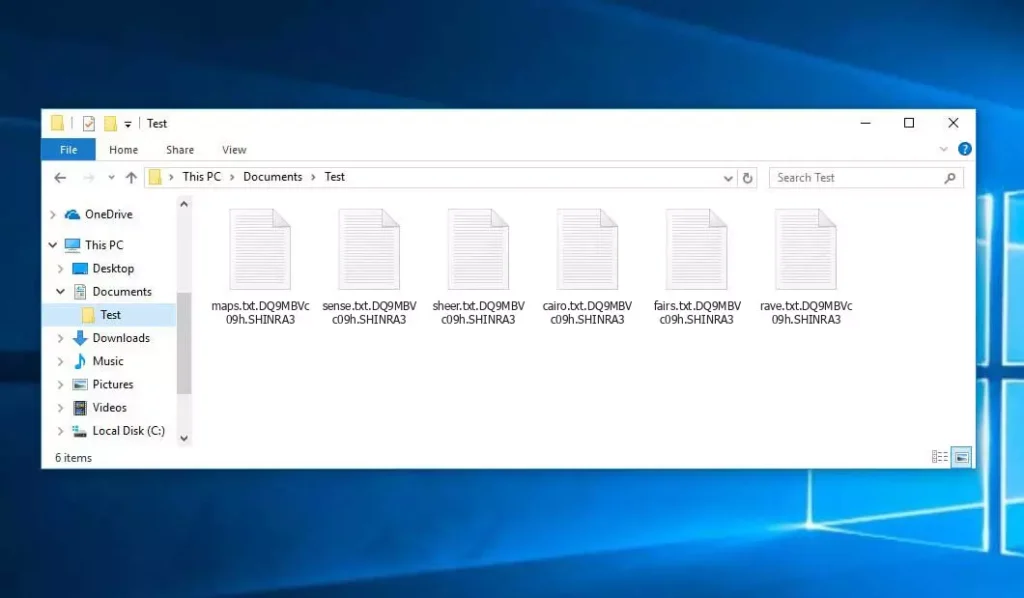
SHINRA 랜섬웨어로 암호화된 파일 (.신라3 확장)
암호화된 파일이 있는 모든 폴더, 당신은 찾을 수 있습니다 #SHINRA-Recovery.txt 텍스트 파일. 이 파일은 본질적으로 몸값을 지불하고 바이러스 개발자로부터 암호 해독 도구를 얻는 방법에 대한 지침을 제공하는 몸값 메모입니다.. 이 도구를 얻으려면, 당신은 연락해야 qq.decrypt@gmail.com 또는 qq.encrypt@gmail.com.
신라 정리:
| 이름 | 신라 바이러스 |
| 랜섬웨어 계열 | 양성자 랜섬웨어 |
| 확대 | .신라3 |
| 랜섬웨어 참고 | #SHINRA-Recovery.txt |
| 연락하다 | qq.decrypt@gmail.com, qq.encrypt@gmail.com |
| 발각 | 몸값:Win64/아키라.CCDR!MTB, 몸값. 신라, Win64:RansomX-gen [몸값], ml.attribute.highconfidence |
| 증상 | 귀하의 파일 (사진, 비디오, 서류) 가지고 있다 .신라3 확장 그리고 넌 열 수 없어. |
| 수정 도구 | 시스템이 Shinra 바이러스의 영향을 받았는지 확인하세요. |
그만큼 #SHINRA-Recovery.txt 문서 동반 신라 악성코드 다음과 같은 실망스러운 정보를 제공합니다:
~~~ SHINRA ~~~ >>> What happened? 우리는 귀하의 모든 파일을 암호화하고 훔쳤습니다.. AES 및 ECC 알고리즘을 사용합니다.. 우리의 암호 해독 서비스 없이는 누구도 귀하의 파일을 복구할 수 없습니다. >>> What guarantees? 다음보다 작은 중요하지 않은 파일을 보내주실 수 있습니다. 1 MG, 우리는 그것을 보증으로 해독합니다. 당사가 귀하에게 복호화 소프트웨어를 보내지 않거나 도난당한 데이터를 삭제하지 않는 경우, 앞으로는 누구도 우리에게 돈을 지불하지 않을 테니 우리는 약속을 지킬 것입니다. >>> How to contact us? 우리의 이메일 주소: qq.decrypt@gmail.com 이내에 답변이 없는 경우 24 시간, 이 이메일로 연락주세요: qq.encrypt@gmail.com 이메일 제목에 개인 ID를 기재해주세요.. >>>>>>>>>>>>>>>>>>>>>>>>>>>>>>>>>>>>>>>>>>>>>>>>>>>>>>>>>>>>>> >>>>>>>>> Your ID: - <<<<<<<<<< >>>>>>>>>>>>>>>>>>>>>>>>>>>>>>>>>>>>>>>>>>>>>>>>>>>>>>>>>>>>>> >>> Warnings! - 복구업체 가지 마세요, 그들은 당신에게서 돈을 벌고 당신을 속이는 중개인일 뿐입니다.. 그들은 우리와 비밀리에 협상을 해요, 암호 해독 소프트웨어 구매, 그리고 당신에게 그것을 몇 배나 더 비싸게 팔 것입니다. 그렇지 않으면 그들은 단순히 당신을 속일 것입니다. - 오랫동안 망설이지 말고. 더 빨리 지불할수록, 가격이 낮을수록. - 암호화된 파일을 삭제하거나 수정하지 마세요, 파일 암호 해독에 문제가 발생할 수 있습니다.
아래 스크린샷에서, Shinra가 암호화한 파일이 있는 디렉터리가 어떤 모습인지 확인할 수 있습니다.. 각 파일 이름에는 “.신라3” 거기에 확장자가 추가되었습니다..
Shinra 랜섬웨어는 어떻게 내 PC에 침투했나요??
랜섬웨어 주입 방법은 다양합니다.
현재 악당이 랜섬웨어를 디지털 환경에 정착시키는 가장 널리 사용되는 세 가지 방법이 있습니다.. 이메일 스팸입니다, 트로이 목마 침투, 및 피어 네트워크.
- 사서함에 접속하여 유틸리티 서비스 제공업체에서 보낸 알림처럼 보이는 편지를 본 경우, FedEx와 같은 우편 기관, 웹 액세스 제공업체, 그리고 뭐, 그런데 누구의 주소가 당신에게 이상합니까?, 그 이메일을 열지 조심하세요. 유해한 파일이 포함되어 있을 가능성이 매우 높습니다.. 따라서 이와 같은 이메일과 함께 제공되는 첨부 파일을 다운로드하는 것은 더욱 위험합니다..
- 몸값 사냥꾼을 위한 또 다른 옵션은 트로이 목마 바이러스 모델입니다.. 트로이 목마는 합법적인 것처럼 가장하여 컴퓨터에 침입하는 개체입니다.. 예를 들어, 원하는 일부 프로그램의 설치 프로그램이나 일부 소프트웨어의 업데이트를 다운로드합니다.. 하지만 포장을 뜯은 것은 당신의 데이터를 암호화하는 유해한 에이전트임이 밝혀졌습니다.. 업데이트 패키지에는 제목과 아이콘이 있을 수 있으므로, 다운로드하는 항목의 리소스를 신뢰할 수 있는지 확인해야 합니다.. 최적의 방법은 소프트웨어 개발자를 신뢰하는 것입니다’ 공식 웹사이트.
- 토렌트 추적기와 같은 피어 파일 전송 프로토콜의 경우, 위험은 웹의 나머지 부분보다 훨씬 더 신뢰 기반이라는 것입니다.. 다운로드하기 전까지는 무엇을 다운로드했는지 알 수 없습니다.. 그러니 믿을 수 있는 웹사이트를 이용하는 것이 좋습니다. 또한, 다운로드가 완료되는 즉시 맬웨어 방지 유틸리티를 사용하여 다운로드한 파일이 포함된 폴더를 검사하는 것이 합리적입니다..
랜섬웨어를 제거하는 방법?
파일을 암호화하는 것 외에도, 신라 바이러스가 설치될 가능성이 높습니다 비다르 스틸러 다른 계정의 자격 증명에 액세스하기 위해 컴퓨터에서 (암호화폐 지갑을 비롯한). 해당 프로그램은 브라우저의 자동 완성 카드 파일에서 로그인 및 비밀번호를 파생할 수 있습니다..
Gridinsoft Anti-Malware로 Shinra 제거
우리는 또한이 소프트웨어 에서이 소프트웨어를 우리 시스템에서 사용하고 있습니다., 그리고 그것은 항상 바이러스를 감지하는 데 성공했습니다. 가장 일반적인 랜섬웨어를 차단했습니다 우리의 테스트에서 보여 주었다 소프트웨어와 함께, 컴퓨터에 숨어 있는 Shinra 및 기타 악성 코드를 제거할 수 있다고 확신합니다..

악의적 인 위협을 제거하기 위해 Gridinsoft를 사용합니다, 아래 단계를 따르십시오:
1. Gridinsoft anti-malware를 다운로드하여 시작하십시오, 아래 또는 공식 웹 사이트에서 직접 파란색 버튼을 통해 액세스 할 수 있습니다. gridinsoft.com.
2.GridInsoft 설정 파일이되면 (Setup-gridinsoft-fix.exe) 다운로드됩니다, 파일을 클릭하여 실행하십시오. Follow the installation setup wizard's instructions diligently.
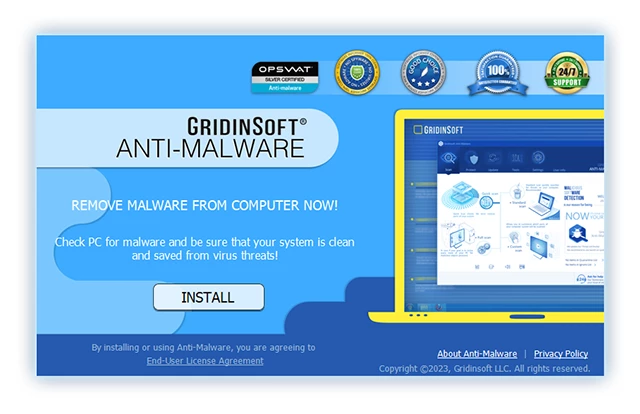
3. 액세스 "스캔 탭" on the application's start screen and launch a comprehensive "전체 스캔" 전체 컴퓨터를 검사합니다. 이 포괄적 인 스캔은 메모리를 포함합니다, 스타트 업 항목, 레지스트리, 서비스, 드라이버, 그리고 모든 파일, 가능한 모든 위치에 숨겨진 맬웨어를 감지하는지 확인.

인내하십시오, as the scan duration depends on the number of files and your computer's hardware capabilities. 이 시간을 사용하여 휴식을 취하거나 다른 작업에 참석하십시오..
4. 완료되면, 방지 방지는 PC에 감지 된 모든 악성 품목 및 위협이 포함 된 자세한 보고서를 제시합니다..

5. 보고서에서 식별 된 모든 항목을 선택하고 자신있게 "지금 청소" 단추. 이 작업은 컴퓨터에서 악의적 인 파일을 안전하게 제거합니다., 더 이상의 유해한 행동을 방지하기 위해 말장 방지 프로그램의 안전한 검역 구역으로 전송.

6. 프롬프트가있는 경우, 전체 시스템 스캔 절차를 마무리하려면 컴퓨터를 다시 시작하십시오.. 이 단계는 남은 위협을 철저히 제거하는 데 중요합니다.. 재시작 후, Gridinsoft anti-malware가 열리고 메시지를 표시합니다. 스캔 완료.
Gridinsoft는 6 일 무료 평가판을 제공합니다. 즉, 소프트웨어의 모든 이점을 경험하고 시스템의 향후 악성 코드 감염을 예방하기 위해 무료로 시험 기간을 이용할 수 있습니다.. Embrace this opportunity to fortify your computer's security without any financial commitment.
공격자들은 실제로 해독 도구가 있음을 증명하기 위해 여러 파일을 해독하는 경우가 많습니다.. 신라 바이러스는 비교적 최근의 랜섬웨어이기 때문에, 안전 조치 개발자는 아직 작업을 취소할 방법을 찾지 못했습니다.. 하지만, 암호 해독 도구는 자주 업데이트됩니다., 그러면 효과적인 대응책이 곧 나올 것입니다..
당연히, 범죄자가 누군가의 필수 파일을 인코딩하는 데 성공하면, 희망이 없는 사람은 아마도 그들의 요구에 응할 것이다. 하지만, 몸값을 지불한다고 해서 파일을 다시 돌려받을 수 있다는 보장은 없습니다.. 아직은 위험해요. 몸값을 받은 후, 공격자는 피해자에게 잘못된 암호 해독 코드를 전달할 수 있습니다.. 몸값을 받고 답장도 없이 사라진다는 신고도 있었습니다..
랜섬웨어에 대한 가장 좋은 대책은 시스템 복원 지점이나 필수 파일의 복사본을 클라우드 저장소 또는 최소한 외부 저장소에 두는 것입니다.. 물론, 그것만으로는 충분하지 않을지도 몰라. 가장 중요한 것은 모든 것이 시작되었을 때 작업 중이던 것일 수 있습니다.. 하지만 적어도 그것은 뭔가입니다. OS 복원 후 바이러스 백신 프로그램으로 PC의 바이러스를 검사하는 것도 합리적입니다..
다른 랜섬웨어 제품도 있어요, 신라 외에, 비슷하게 작동하는 것. 그 예로는 BGJS, 그리고 BGZQ 랜섬웨어. Shinra와 두 가지 기본적인 차이점은 몸값 금액과 암호화 방법입니다.. 나머지는 거의 비슷해요: 파일이 차단됨, 확장자가 변경됨, 암호화된 파일이 포함된 각 폴더에 몸값 메모가 생성됩니다..
일부 운이 좋은 사용자는 랜섬웨어 방지 전문가가 제공하는 무료 소프트웨어의 도움을 받아 차단된 파일의 암호를 해독할 수 있었습니다.. 때로는 공격자가 몸값 메모에 있는 피해자에게 실수로 해독 키를 보내는 경우도 있습니다.. 이러한 심각한 실패로 인해 부상당한 부분이 파일을 복원할 수 있습니다.. 하지만 자연스럽게, 그런 기회에 절대 의존해서는 안 된다. 기억하다, 랜섬웨어는 피해자로부터 돈을 빼내기 위한 범죄자의 도구입니다..
랜섬웨어 침입을 방지하는 방법?
Shinra 랜섬웨어에는 초능력이 없습니다, 유사한 악성코드도 마찬가지입니다..
몇 가지 간단한 단계를 통해 컴퓨터가 주입되는 것을 방지할 수 있습니다.:
- 모르는 사람이 보낸 이상한 주소의 편지는 무시하세요, 또는 기대하는 내용과 전혀 관련이 없는 콘텐츠 (참여하지 않고도 상금 추첨에 당첨될 수 있나요??). 이메일 제목이 귀하가 기대하는 내용과 어느 정도 일치하는 경우, 의심스러운 편지의 모든 요소를 주의 깊게 조사하십시오.. 사기 편지에는 항상 실수가 포함되어 있습니다.
- 크랙이 있거나 신뢰할 수 없는 프로그램은 사용하지 마세요.. 트로이 목마는 크랙된 제품의 일부로 확산되는 경우가 많습니다., 아마도 라이센스 확인을 방해하는 "패치"로 위장했을 수도 있습니다.. 그러나 잠재적으로 위험한 프로그램은 신뢰할 수 있는 프로그램과 구별하기가 매우 어렵습니다., 트로이 목마에는 때때로 필요한 기능이 있기 때문입니다.. 맬웨어 방지 포럼에서 이 소프트웨어 제품에 대한 정보를 검색해 보세요., 하지만 가장 좋은 해결책은 그러한 프로그램을 전혀 사용하지 않는 것입니다..
- 그리고 마지막으로, 다운로드한 개체의 안전을 확인하기 위해, GridinSoft Anti-Malware로 확인해보세요. 이 프로그램은 귀하의 시스템을 위한 강력한 방어책이 될 것입니다.
자주 묻는 질문
🤔 “.신라3” 액세스 가능한 파일?
안타깝게도, 아니요. 해독해야 합니다. “.신라3” 파일 먼저. 그러면 당신은 그것들을 열 수 있을 것입니다.
🤔 내 파일에 최대한 빨리 액세스하려면 어떻게 해야 하나요??
이러한 중요한 파일의 사본을 다른 곳에 저장해 두는 것이 좋습니다.. 그렇지 않은 경우, 여전히 시스템 복원 기능이 있지만 이전에 저장하려면 복원 지점이 필요합니다.. 다른 모든 솔루션에는 시간이 필요합니다..
🤔 GridinSoft가 Shinra 악성코드를 삭제한다면, 암호화된 내 파일도 삭제되나요??
안 돼요! 암호화된 파일은 PC에 아무런 위협이 되지 않습니다..
GridinSoft Anti-Malware는 활성 바이러스만 처리합니다.. PC에 침투한 랜섬웨어는 여전히 활성 상태여야 하며 시스템을 주기적으로 검사하여 초기 공격 후 PC에 생성할 수 있는 새 파일을 모두 검거합니다.. 위에서 말했듯이, Shinra 악성 코드는 혼자 오지 않습니다. 무단 침입으로 귀하의 계정 비밀번호를 훔칠 수 있는 백도어와 키로거를 설치하고, 일정 시간이 지난 후 범죄자가 귀하의 시스템에 쉽게 접근할 수 있도록 해줍니다..
🤔 Shinra 랜섬웨어로 인해 컴퓨터가 차단되어 활성화 코드를 받을 수 없는 경우 어떻게 해야 하나요?.
이런 불행한 상황에, 너는 준비해야 해. 이전에 설치된 트로이 목마 킬러가 있는 메모리 스틱. 안전 모드를 사용하여 청소 수행. 보시다시피, 랜섬웨어는 시스템이 시작될 때 자동으로 실행되며 생성되거나 PC로 가져온 모든 새 파일을 인코딩합니다.. 이 기능을 차단하려면 – 안전 모드 사용, 필수 프로그램만 자동으로 실행되도록 하는 기능. 안전 모드에서 Windows를 부팅하는 방법에 대한 설명서를 읽어보세요..
🤔 지금 상황에 도움이 될 수 있는 것은 무엇입니까??
암호화된 데이터 중 일부는 다른 곳에서 찾을 수 있습니다..
- 중요한 파일을 이메일로 보내거나 받은 경우, 온라인 사서함에서 다운로드할 수 있습니다..
- 친구나 가족과 이미지나 동영상을 공유했을 수도 있습니다.. 해당 이미지를 다시 보내달라고 요청하세요..
- 처음에 인터넷에서 파일을 가져온 경우, 다시 해볼 수 있어.
- 당신의 메신저, 소셜 네트워크 페이지, 클라우드 드라이브에도 해당 파일이 모두 있을 수 있습니다.
- 어쩌면 이전 PC에 필요한 파일이 아직 남아 있을 수도 있습니다., 노트북, 핸드폰, 플래시 메모리, 등.

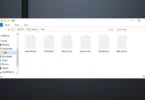
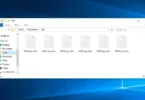
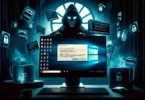



의견을 남겨주세요